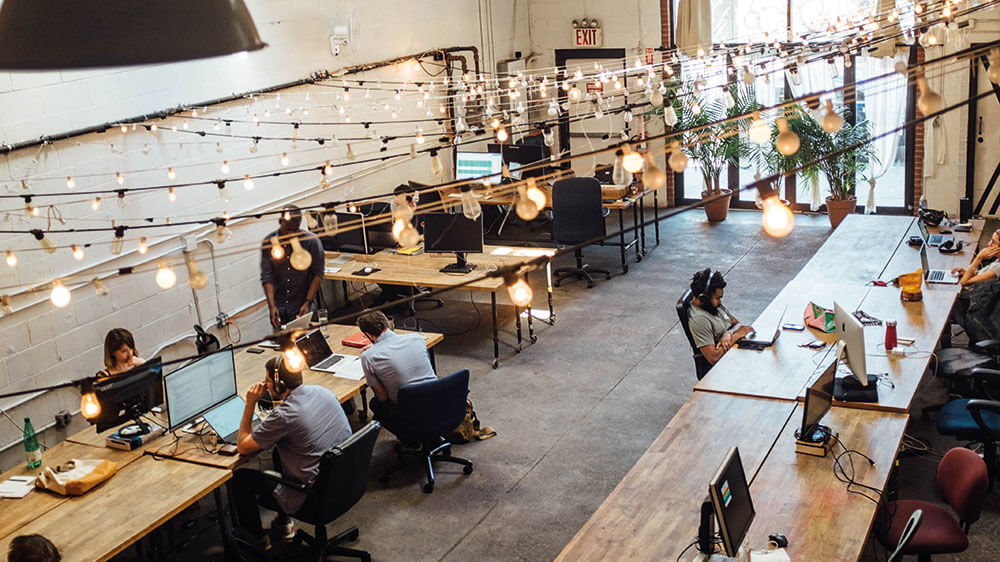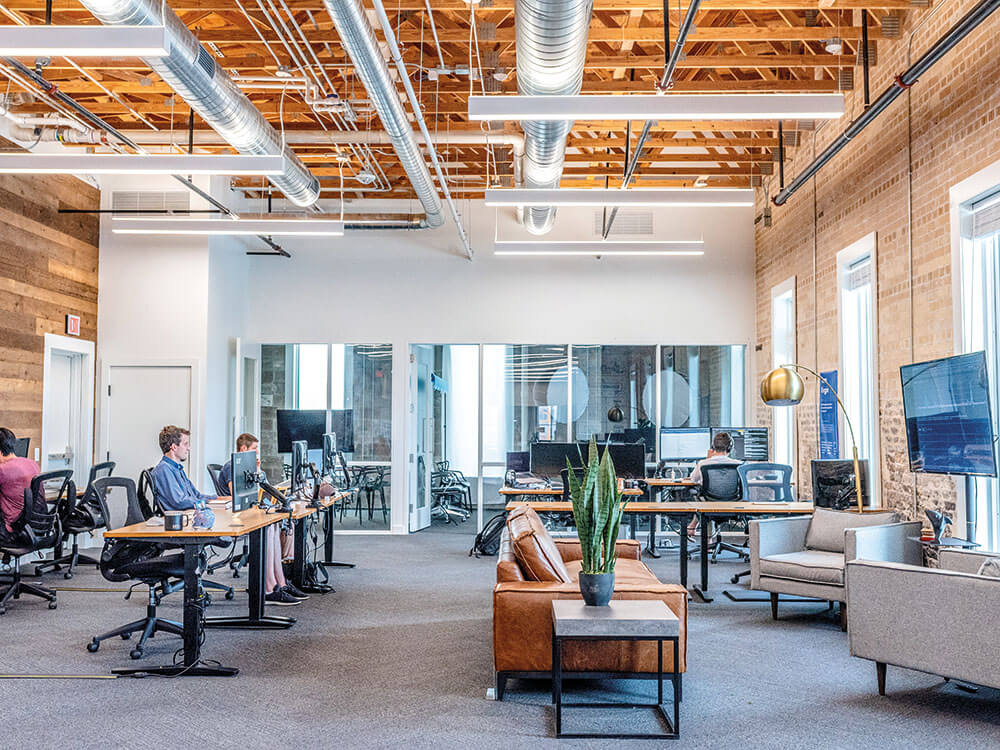By GUZMÁN YARZA DE BLACHE
SPENDING the evening scrolling through work emails is something we all do, and it’s a bad habit – a leading causes of stress.

Modern technology has made contacting colleagues easier than ever; from video conferencing to workplace messaging apps, we’re only ever a few taps of a button away.
Convenient though it is, increased connectivity can cause people to spend their lives responding to message after message, or feeling as though they are sprinting from one task to the next. It counts as workplace stress, and it costs UK employees 15.4 million sick days each year.
Businesses face a dilemma. How do they create a workplace buzz, with stimulating interaction and efficient communication, while also giving employees the space to relax? Managerial policies are vital to ensure the humdrum of activity never escalates to an intense cacophony.
And workplace design has a vital – often overlooked – role to play.
There’s no point tackling mounting stress in our cyberspaces, but allowing it to grow unchecked in our workspaces. Much of the day-to-day experience of work is determined by physical environment. Offices not only embody the values of the company they house, but also play a vital role in the attraction and retention of talent. They are more than just bricks and mortar, they are a vital component of any business.
So: can we design a stress-free office? Well, to a significant extent, yes.
Amid all the talk of the rise of AI and automation, we must not forget that the modern worker is not a robot. Studies have found that exposure to natural elements – trees and running water, or even pictures of trees and running water – are associated with shorter hospital stays for adults and increased academic performance for children.
The same is true of our workplaces, and so we’re seeing businesses begin to embrace the benefits of biophilic office design. And while dotting plants around an office, or showing images of foliage on a screen, can help to create a sense of calm, biophilic design goes much further: natural materials such as wood and stone in walls and furniture can help bring more of the outdoors, indoors and help curb rising stress.

Natural light and views of the great outdoors are valued by employees, and have mood-enhancing benefits that can translate into better sleep, higher energy levels and the ability to better deal with stressful situations. Meeting rooms should be placed in rooms away from the windows, so open-plan work spaces – where the majority of people spend their working day – can be flooded with daylight.
In areas located in the middle of buildings, white walls maximise the light. Then there are innovations. At Overstock headquarters in Salt Lake City, smart glass that reacts to sunlight to minimise glare – without obstructing the view – has replaced window blinds.
Perhaps unsurprisingly, the use of bright colours has also been shown to have significant benefits on mood. Vibrant hues can help inject energy and creativity into spaces designed for collaboration, while muted colours – blues and purples particularly – provide a real fillip to concentration. Greens help us to relax.
And while loud colours can boost productivity, loud noises can have the opposite effect. Sound-absorbing ceiling rafts can be used to create quiet areas, as have been effectively deployed at co-working spaces such as Fora, in Reading.

Heavy curtains contain the noise of conversation in social spaces. Workplace pods offer secluded, soundproofed areas where people can work undisturbed to meet deadlines or work on a problem.
This last point is instructive. No surprise to learn that crowded offices can cause people to feel hemmed-in. City dwellers often commute on tightly-packed trains and subways, and won’t relish spending the rest of the day sardine-fashion. We all need our own space, and without a feeling of privacy it can be difficult – and stressful – to deal with a day’s work.
One solution is the open-plan office, which naturally help to foster collaboration, an occurrence known as “prospect” by the late geographer Jay Appleton. Our minds are wired by evolution to react to flatlands (or open-plan offices), allowing us to develop strategies and collaborative ideas.
Even a perfect office can’t stop employees spending their evenings glued to emails, but good design can go a long way to ensuring that they don’t feel trapped in the rat race.
Until they leave the office, at least.
Guzmán Yarza de Blache is EMEA head of workplace strategy at JLL




























